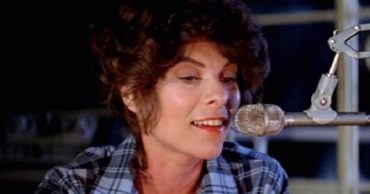
The cold open is a technique that a lot of people have seen, in fact, it’s safe to state that most people that have ever watched TV or a movie have seen this since it’s a popular narrative method used to bring a person directly into the story before the title or the credits are shown. By showing the credits, the title, and by slowly revealing the landscape and the story, otherwise warming the viewer up to what’s coming, a cold open will drop the viewers into a situation, conflict, or whatever is going to happen without warning and without any introductions. A cold open is basically the idea that the audience isn’t being primed for what’s about to happen, you sit down and suddenly the story starts and one is expected to roll with it. A lot of folks don’t mind this since it does bring them right into the story without needing to build up any tension. It doesn’t build up expectations and it doesn’t get people jazzed up in any way before the action starts. It’s basically a chance to start telling the story without too much exposition and to snap the audience into focus by getting right into it and forcing them to catch up if they have to. Cold opens are actually quite a bit of fun when writing them out since the lack of buildup does mean that one will have to explain things as they go, but it sets a pace that stuns a part of the audience and allows the story to unfold before exposition needs to happen.
There are those people that don’t like cold opens since they want to know what’s going on, who’s who, and what the story is about before the action starts. To these folks, just dropping into the middle of the action is frustrating since they either can’t think quickly enough to figure out what’s going on or they don’t want to. But the benefit of a cold open is that it’s very much like a splash of cold water to the face, it snaps the audience to attention and makes it clear that things have popped off and that there’s no time to do anything such as talk, discuss how the show will open, or even grab a snack as the opening credits begin to appear. It’s time to sit down and pay attention and get into the meat of it and worry later about taking the time to calm down. With some shows the cold open isn’t all that big of a deal since it will plunk the audience into the midst of hte main point without that much fanfare or expectation, but with some shows, the action is quick, to the point, and it won’t slow down until the opening credits appear.
The thing about a cold open is that it pushes through a great deal of story by revealing a part of what’s really important, or at least what helps to make the show what it is, without having to go through the tedious process of building things up and introducing everyone to the main characters in a way that feels a little too contrived. By using a cold open a lot of shows can get into the thick of the main point without having to waste too much time that might kill off a lot of interest. But the trick is that a cold open can be used too often since there are times when exposition is more useful than just jumping into the middle of the action, since the story of any show has to evolve to please the audience in various ways so as to keep their attention and not leave them expecting one thing or another. By using a cold open too extensively for each episode it’s possible to create fatigue, and the fans might not want to even think about turning it on any longer since they’ll have to mentally prepare themselves for each episode, and this can be exhausting from the standpoint of a viewer. It might sound ridiculous and even laughable to think that being a viewer could be this difficult, but if the show is making people tired before it even gets to the main point then it needs to switch things up and go for a more traditional opening and build the narrative rather than just dump it in the audience’s lap.
But what do I know, right? As a writer/reader/aspiring screenwriter/author, I do know a few things, and that’s how to get one’s reader to actually want to see what’s coming next, rather than wear them out with a constant drop into the middle where they’ll have to look back and figure out what’s going on while trying to look forward to see what’s coming. The cold open is a fun narrative tool, but when used too often it can lose its efficiency, just like many things.
 Follow Us
Follow Us




